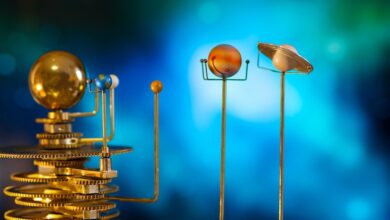How Motherboards Work (Tech Quickie)

When it comes to constructing or upgrading a PC, the motherboard is often overlooked behind flashier additives like the CPU or pics card. But this critical piece of hardware functions as the spine of your computer. Without it, your PC clearly wouldn’t work.
Whether you’re a first-time PC builder, a tech fanatic eager to expand your know-how, or a lifelong gamer perfecting your rig, knowledge how motherboards work can elevate your tech knowledge. This manual will destroy down the function of the motherboard, its middle additives, and its inner workings, so that you can with a bit of luck select or troubleshoot an appropriate motherboard to your device.
What Is a Motherboard?
At its center, a motherboard is a broadcast circuit board (PCB) that connects all the different parts of a laptop, allowing them to speak and characteristic collectively. Think of it as your PC’s nervous gadget—it allows strength and statistics transfer among additives just like the CPU, RAM, and GPU. Every different component you upload to your pc is both built into the motherboard or connected to it in some manner.
Without a motherboard, your gaming PC wouldn’t be able to launch your favorite AAA titles, and your computing device wouldn’t be able to run worrying software for responsibilities like video enhancing or coding. Simply put, the motherboard is vital to bringing your laptop to existence.
Core Components of a Motherboard
Motherboards may also appear intimidating before everything look, with their sea of additives and connectors. But after you spoil it down, the essentials are easy to understand. Here are the important thing components you’ll find on a preferred motherboard:
1. CPU Socket
The CPU socket is wherein your processor (the pc’s brain) connects to the motherboard. It’s surrounded by many tiny pins or holes that align perfectly with the CPU’s configuration. Popular socket kinds include Intel’s LGA sockets and AMD’s AM4 or AM5 sockets. Compatibility between your CPU and motherboard’s socket is critical.
2. RAM Slots
The long, thin slots next to the CPU socket are RAM (Random Access Memory) slots. This is wherein your machine’s reminiscence modules are set up. RAM allows your computer to access records quickly for strolling programs and tasks. Most cutting-edge motherboards support DDR4 or DDR5 RAM, with multiple slots to accommodate upgrades.
three. Expansion Slots
Expansion slots allow you to upload greater functionality on your machine, such as photographs playing cards (GPUs), sound playing cards, or network playing cards. The maximum not unusual type is the PCIe (Peripheral Component Interconnect Express) slot, that is critical in case you’re into gaming or video modifying.
four. Storage Connectors
Motherboards are equipped with connectors for storage drives, like SATA ports for HDDs and SSDs or M.2 slots for NVMe SSDs. Storage interfaces have a significant impact for your device’s pace and overall performance.
five. Power Connectors
The energy deliver unit (PSU) supplies strength on your motherboard through electricity connectors. This powers all of the additives connected to the motherboard, including the CPU and GPU.
6. I/O Ports
Located on the returned panel, I/O (enter/output) ports include USB, audio jacks, Ethernet, HDMI, and DisplayPort connections. These connect your laptop to external devices like video display units, keyboards, and mice.
How Do Motherboards Work?
Motherboards are frequently called the “hub” of a pc because they allow conversation among all of the different hardware components. Here’s a step-by way of-step breakdown of the motherboard’s internal workings:
- Power Delivery: The PSU offers power to the motherboard thru the ATX power connectors. Voltage regulators on the motherboard then make certain each component receives the suitable amount of strength.
- Data Communication: The motherboard employs a chipset (usually divided into Northbridge and Southbridge components) to manage facts flow between the CPU, RAM, GPU, and storage devices.
- Peripheral Connections: I/O ports and enlargement slots permit external gadgets and peripherals to speak with the machine, ensuring seamless interaction between your PC and add-ons.
- BIOS/UEFI Firmware: The motherboard’s BIOS (Basic Input/Output System) or UEFI (Unified Extensible Firmware Interface) initializes hardware and ensures all components work properly collectively during startup.
Exploring Motherboard Form Factors
Motherboards are available exceptional form factors, which determine their length, layout, and compatibility with PC cases and additives. Here are the maximum commonplace shape elements:
- ATX (Advanced Technology eXtended): The most popular option for wellknown computers, best for game enthusiasts and PC developers way to enough connectors and enlargement slots.
- Micro-ATX: A more compact model of ATX, imparting a stability between length and functionality.
- Mini-ITX: Perfect for small builds, Mini-ITX forums are compact but confined in expansion slots.
When constructing a PC, always make certain your motherboard’s form aspect fits your case and fits your thing needs.
Compatibility and Upgradability
Choosing the right motherboard involves greater than choosing one which suits your case—it needs to be well suited together with your CPU, RAM, GPU, and other components. Check these key elements before purchasing:
- CPU Compatibility: Match the CPU socket type.
- RAM Support: Verify maximum RAM capability and sort (DDR4, DDR5).
- Expansion Options: Ensure enough PCIe slots for destiny enhancements.
- Storage Needs: Look for M.2 slots and SATA ports for added garage flexibility.
A motherboard with robust improve capability guarantees your build will live applicable for years yet to come.
Advanced Features of Modern Motherboards
Today’s motherboards come geared up with awesome capabilities tailored to fanatics and gamers, which includes:
- Overclocking Support: Tweak your CPU and RAM for better overall performance.
- RGB Lighting: Add aesthetic flair with customizable lights consequences.
- Onboard Wi-Fi: Eliminate the need for a separate network card for wireless connectivity.
- Advanced Cooling Options: Support for liquid cooling systems and extra fan headers for premiere warmth control.
These extras make current motherboards crucial for high-overall performance PCs.
Common Issues and Troubleshooting
Motherboards, like several hardware, can enjoy issues. Here are a few not unusual issues and how to address them:
- PC Won’t Boot: Check electricity connections and reseat the RAM and GPU.
- No Display Output: Ensure the screen is hooked up to the proper port at the GPU (not the motherboard).
- Hardware Not Detected: Update your motherboard’s BIOS and take a look at issue compatibility.
When doubtful, consult your motherboard’s manual or are looking for assist from on line tech communities.
Build Smarter, Play Harder
The motherboard may not be the flashiest a part of your PC, but it’s undeniably one of the maximum crucial. It bridges all your components collectively, allowing your PC to characteristic as a cohesive unit.
Whether you’re a first-time builder experimenting with PC constructing, a gamer pleasant-tuning your setup for top performance, or a tech enthusiast deep-diving into components, getting the right motherboard can make all of the distinction.



